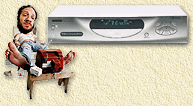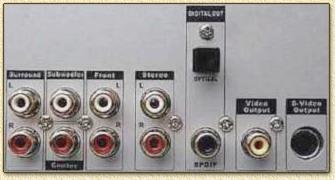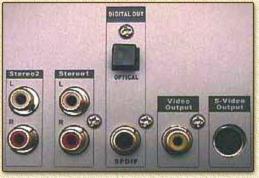
| Print this page - use Landscape |
Search the WeetHet Pages |
|||||||||||||||||||||||||||||||||||||||||||||||||||||||||||||||||||||||||||||||||||||||||||
| WeetHet is being updated! - Current articles will slowly move to www.tweaking4all.com For excellent webhosting that is reliable and affordable, we highly recommend: LiquidWeb |
||||||||||||||||||||||||||||||||||||||||||||||||||||||||||||||||||||||||||||||||||||||||||||
|
On this page ...
Overview
What formats can a Yami handle?
These CD-formats can be handled by the player:
Note: not all firmwares are able to either play XVCD or MPG files. The CD media type used does not matter. Normal silver colored CD's work just fine, but so do CD-recordables and CD-rewriteables. Specially the last two media types are interresting for home users. For example: this way you can make your own MP3 collection, or put your home video on a VCD or SVCD. More details on this subject can be found on the Make your own MP3 CD page. The Yamakawa 7xx is, by my knowledge, no longer for sale. Check eBay and similar markets for a used model. You could (they market Europe and the US!) also pay a visit to Seditec. Yamakawa runs several models, the 713 and 715 models
are the most important ones to us (at least on these pages). Unfortunally
I don't know much about the other models. The 713 has it's own Dolby AC3 decoder onboard. The decoder offers 6 additional audio-outputs. The 715 model does not have it's own decoder. This does not make this player a less good player since both models have a SPDIF digital audio output. Owners of a more recent amplifier with AC3 build in, can pick up this signal and have the maplifier use it just as well or even better. For those people the 715 model is sufficient, since digital output is done in both coax and optical.
In the pictures above, you see the outputs of both models, the Yamakawa 713 en de 715. Note: some newer (European) models have a so called SCART output as well! Starting on the left and going to the right, for the 713, these outputs can be found: - Surround left and right* * = The Yamakawa 715 (as you can see in the other picture) is missing the Dolby outputs and has a second stereo output instead. The two stereo outputs are switchable using the remote control. In this little table you will find the major capabilities and differences of both players.
MP3, by some people refered to as MPEG layer 3 - although this is not an official MPEG layer, is widely know by computer-users. MP3 is a very often used compression for audio. Specially on the Internet, this is a common format for Audio. Compressie exists in non-informationloss (for example ZIP) informationloss variants where quality is slightly reduced by taking out the parts one cannot hear or see (like MPEG1, MPEG2, MP3 and MPEG4). MP3 removes for example the parts of the audio that cannot be detected by the human ear. This offers an excellent compression: audio can be reduced in size with a factor 10 or better. The big advantage of MP3 is also that there are an awfull lot of files available on the Internet. Using these files one can create a private CD with up to 170 (or even more) songs on one single CD ! For a private party this is great. At the beginning of the party simply start the player and for the next 10 hours you don't need any effort or pay attention to your stereo-set since the music keeps playing and playing ... One small point of dissappointment is the lack of a "shuffle" function (depending on the firmware!). For instructions on how to create your own MP3 CD, take a look at the Yamakawa MP3 page. One of the best parts of the Yamakawa is that it's a piece of cake to disable both MacroVision and Regiocode. So called "secret" codes for the remote controle enable you to do so. Regiocodes are commonly used with DVD's for example to avoid Europeans (region 2) watching American (region 1) DVD's. Detailed information on regiocoding can be found on the DVD-regiocoding page. My personal opinion: a way to make live difficult for consumers ... Thank god, you can disable this, take a look at the Yamakawa Regioncode-free page where I explain how to do this. MacroVision is a more understandable protection against
copying movies. Unfortunally, not every TV or projector can handle this
signal very well. Effects like a screen that keeps switching between dark
and light display or an instable display are usually caused by MacroVision. More details on the secrets on the remote control codes, you can find on the Yamakawa Secrets page. Due to further developments of the Yamakawa, the video output is of a good quality. OK, I have to admit that my first DVD player, a Toshiba SD3109, had a better video output, but then again, this is a very different machine and therefor cannot be compared with the Yamakawa. I did notice that 100Hz TV-sets, which are set to "cold" video mode, often show MPEG-artifacts. The MPEG-artifacts are those little squares that appear on the screen. A normal TV-set however does not show the MPEG-artifacts. A solution for 100Hz TV-sets is to set the video-mode to "warm". Other than this little effect the video quality is very good. As for Audio: excellent. The 713 can even decode AC3 using it's buildin Dolby AC3 decoder. Both music audio and movie audio are great. For the audio-freaks: you can hook up either player to a amplifier that has a digital input (either SPDIF coax or optical) to get the maximum sound quality. One slight problem here, probably a firmware update can fix this, the internal decoder of the 713 is not capable of decoding DTS. The biggest , and probably the smartest, surprise is that the player mechanism is a regular DV-Rom player as seen in PC's. It is possible to take out the mechanism and hook it up to your PC using the IDE/ATAPI interface. Actually this has been tested by putting the drive in a PC and putting a different PC DVD-Rom in the Yamakawa, and yes it works! The big advantage here is that DVD-Rom players are relatively cheap and these drives read basically any CD. That's one of the reasons why the Yamakawa can handle also CD-recordables and CD-rewriteables. Something most "beter" brands are not capable of, or something they announce as a special extra deluxe feature giving it fancy names like dual-pickup. Yamakawa uses different DVD-Rom drives, I found these on the Internet: - RAITE RDR-105 In German forums, it is said that the Raite drive sucks big time. I have a Raite and it works excellent, so I think the complaints are based on early models. For these models, the firmware of the DVD-Rom must be updated as descibed on many website. This is not the same firmware as the firmware used for the Yamakawa. On the Yamakawa DVD-Rom page you will find out what drive your Yamakawa is using. Once more an example for the "better" brands: the firmware of the Yamakawa is updatable. Firmware is basically the operating system of the player, like Linux or Windows for your PC. Just like Windows bugs can be found in any operating system. An update (or like Microsoft: a service pack or a new version of Windows) is required. Yamakawa offers a very easy and cheap way to update the firmware. Firmware updates are not for just removing bugs, they are also used for adding new features like new onscreen display languages, etc. At the Yamakawa Firmware Update page I'll show you how to update you player, however be warned: I cannot be held responsible for damaged players! A firmware update is not without risks, specially when one does not readthe instructions carefully! Keep in mind that fixing a defect player sets you back about $50,... |
||||||||||||||||||||||||||||||||||||||||||||||||||||||||||||||||||||||||||||||||||||||||||||




